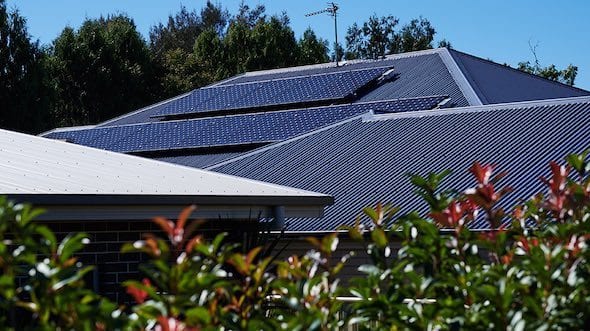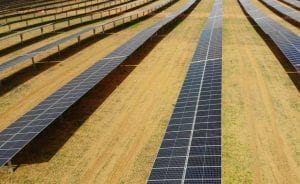Australia’s boom in rooftop solar shows no sign of slowing down, in fact it is accelerating, with 127MW installed in March and a record 351MW in the first quarter of 2018.
According to industry statistician SunWiz, this total for the first three months of the year is 56 per cent of last year, 33 per cent ahead of the previous record first quarter (in 2013), and more than double the “miserable” performance of 2016.
Households and small businesses are clearly responding to the absurdly high grid-prices charged by the big utilities, and the equally crazy push by hard right Coalition MPs to build new coal fired power stations, which most consumers recognise would guarantee even higher grid prices.
“The solar industry is running white hot, and unlike previous booms that were driven by a pending reduction in subsidies, this boom is driven by fundamental economics of high electricity prices and highly affordable solar power system,” SunWiz director Warwick Johnston says.
“This boom looks like it will last for a few years at least.”
New South Wales again pipped Queensland, with just under 32MW installed in the latest month, taking its total to more than 1.5GW. Queensland still leads the cumulative total with 2.05GW.
But other states also head record months, with Victoria and South Australia particularly strong. South Australia is now at 859MW of rooftop solar, enough to account for nearly 10 per cent of its total demand. These are the states that have been hit hardest by recent spikes in wholesale prices.
SunWiz says Victoria now leads the market for systems of 30kW to 100kW – which is the small to medium size business market, although South Australia is also seeing strong growth in this segment.
The biggest move however is in the 10-20kW market, which suggests some households are “maxing out” their rooftops, but also point to installations in farms and smaller businesses.
The news came as a new online platform, known as SunSPoT, was launched that can be used to calculate the solar power potential of any rooftop – home, business, factory or school.
The platform, developed by the Australian PV Institute, along with UNSW, councils, aims to work with councils and their communities to provide independent and open source data and tools for distributed energy decision-making.
Early-adopter councils, who are already project partners, including KuRingGai, Willoughby, Randwick, Northern Beachesand Lane Cove, with more cities and towns to be added as the program expands.
unSPoTwas developed at UNSW by Dr Anna Bruce and Dr Jessie Copper, from the School of Photovoltaics and Renewable Energy Engineering. The interactive platform uses GIS data to estimate the technical potential of rooftop solar, accounting for the tilt of roof surfaces and shading at the site.
The project has key technology partners in Australian companies Solar Analytics and Enosi who contribute energy monitoring, data and an energy exchange platform.
“Australia leads the world in rooftop solar, but there is still lots of potential for adding more solar, and it’s now the cheapest form of electricity generation,” said Renate Egan, APVI Chair and Associate Professor at UNSW.
“SunSPoT aims to give energy consumers the information they need to make a decision how much solar they should install, and how much they will save when they do.”
This article was originally published on RenewEconomy’s sister site, One Step Off The Grid, which focuses on customer experience with distributed generation. To sign up to One Step’s free weekly newsletter, please click here.











